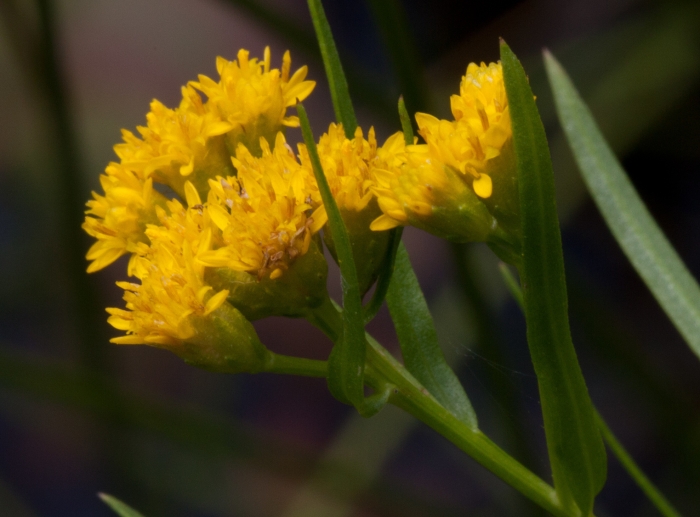Carolina Grass-Leaved Goldenrod
(Euthamia caroliniana)
Carolina Grass-Leaved Goldenrod (Euthamia caroliniana)
/
/

© bobkennedy
CC BY-SA 4.0
Image By:
© bobkennedy
Recorded By:
Copyright:
CC BY-SA 4.0
Copyright Notice:
Photo by: © bobkennedy | License Type: CC BY-SA 4.0 | License URL: http://creativecommons.org/licenses/by-sa/4.0/ | Uploader: bobkennedy | Publisher: iNaturalist |
























Estimated Native Range
Summary
Euthamia caroliniana, commonly known as Carolina grass-leaved goldenrod or slender goldentop, is a perennial herb that is considered Vulnerable due to habitat loss. It is native to a variety of habitats including moist to dry sandy fields, open pine flatwoods, savannas, and the edges of marshes and bogs on the Atlantic Coastal Plain from Nova Scotia to Texas, as well as in the Great Lakes region and around Lake Champlain. This species typically grows to a height of 1 to 3 feet (0.3 to 0.9 meters) and features narrow, grass-like leaves. From late summer to fall, it produces clusters of small, bright yellow flowers that are highly attractive to pollinators.
Carolina grass-leaved goldenrod is valued for its late-season blooms and its ability to attract a wide range of pollinators, making it a beneficial addition to native plant gardens, pollinator gardens, and restoration projects. It is relatively low maintenance, preferring full sun to part shade and tolerating a range of soil types, though it thrives in well-drained sandy soils. While it is not commonly afflicted by serious diseases or pests, it can be susceptible to rust and leaf spot. This plant is not typically aggressive but can spread through rhizomes and self-seeding, which should be considered when planting in small garden spaces.CC BY-SA 4.0
Carolina grass-leaved goldenrod is valued for its late-season blooms and its ability to attract a wide range of pollinators, making it a beneficial addition to native plant gardens, pollinator gardens, and restoration projects. It is relatively low maintenance, preferring full sun to part shade and tolerating a range of soil types, though it thrives in well-drained sandy soils. While it is not commonly afflicted by serious diseases or pests, it can be susceptible to rust and leaf spot. This plant is not typically aggressive but can spread through rhizomes and self-seeding, which should be considered when planting in small garden spaces.CC BY-SA 4.0
Plant Description
- Plant Type: Herb
- Height: 1-3 feet
- Width: 1.5-2.5 feet
- Growth Rate: Rapid
- Flower Color: Yellow
- Flowering Season: Summer, Fall
- Leaf Retention: Deciduous
Growth Requirements
- Sun: Full Sun
- Water: Medium
- Drainage: Medium
Common Uses
Bird Garden, Butterfly Garden, Erosion Control, Low Maintenance, Water Garden
Natural Habitat
Native to moist to dry sandy fields, open pine flatwoods, savannas, and the edges of marshes and bogs on the Atlantic Coastal Plain, the Great Lakes region, and around Lake Champlain
Other Names
Common Names: Slender Flat-top Goldentop, Grass-leaved Goldenrod, Slender Fragrant Goldenrod, Slender Goldentop, Slender-Leaved Goldenrod
Scientific Names: , Euthamia caroliniana, Aster euthamia, Diplemium carolinianum, Erigeron carolinensis, Erigeron carolinianus, Euthamia caroliniana, Euthamia microcephala, Euthamia microphylla, Euthamia minor
GBIF Accepted Name: